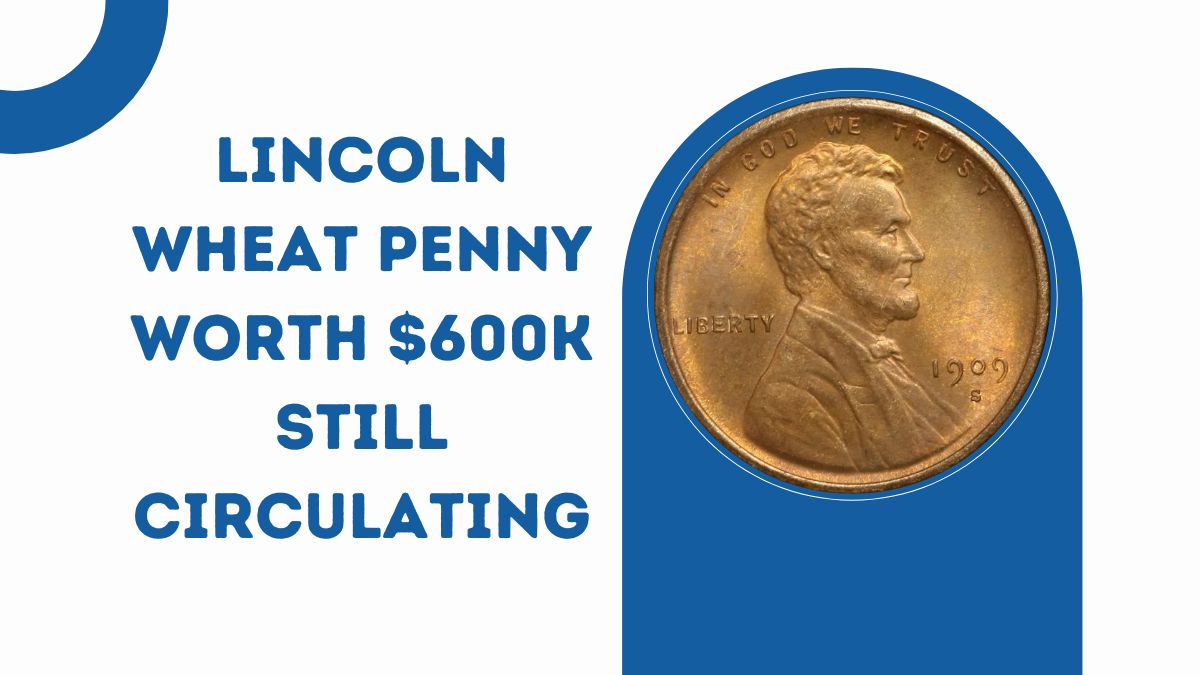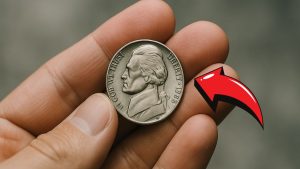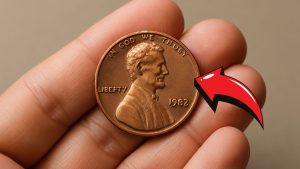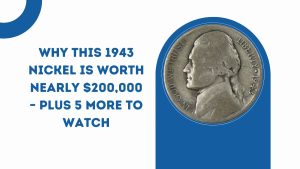The Lincoln Wheat Penny, minted from 1909 to 1958, holds a special place in American numismatic history. While most of these pennies are of nominal value, certain rare variants are worth substantial sums.
Astonishingly, some of these valuable coins, including those worth up to $600,000, may still be circulating today. This article delves into the specifics of these rare pennies, their historical significance, and how you might identify one in your possession.
The Legacy of the Lincoln Wheat Penny
Introduced in 1909 to commemorate the centennial of Abraham Lincoln’s birth, the Lincoln Wheat Penny was the first U.S. coin to feature a president’s likeness.
Designed by Victor David Brenner, the obverse showcases Lincoln’s profile, while the reverse displays two wheat stalks encircling the denomination, symbolizing prosperity and unity. This design remained until 1958, after which the reverse was changed to depict the Lincoln Memorial.
Rare and Valuable Variants
Among the myriad of Lincoln Wheat Pennies, certain variants stand out for their rarity and value:
1. 1943 Copper Wheat Penny
During World War II, to conserve copper for military use, the U.S. Mint produced pennies from zinc-coated steel in 1943. However, a few were mistakenly struck on leftover copper planchets from 1942. These rare 1943 Copper Wheat Pennies are highly sought after by collectors. One such penny fetched over $500,000 at auction.
2. 1943-D Bronze Cent
An even rarer variant is the 1943-D Bronze Cent, minted in Denver. Only one known specimen exists, which sold for an astounding $840,000.
3. 1909-S VDB Penny
The inaugural year of the Lincoln Penny saw the inclusion of designer Victor David Brenner’s initials (“VDB”) on the reverse. The San Francisco Mint produced a limited run of these, making the 1909-S VDB Penny exceptionally rare. Some have been sold for over $300,000.
4. 1955 Double Die Penny
A notable minting error led to the 1955 Double Die Penny, where the date and lettering appear doubled. Approximately 20,000 to 24,000 of these entered circulation, with well-preserved examples commanding tens of thousands of dollars.
Identifying a Valuable Lincoln Wheat Penny
To determine if you possess one of these rare pennies, consider the following steps:
- Examine the Date and Mint Mark Look for key dates such as 1909-S, 1943, and 1955. The mint mark, located below the date, indicates the minting location:
- No Mark: Philadelphia Mint
- D: Denver Mint
- S: San Francisco Mint
- Assess the Coin’s Material The 1943 pennies were primarily steel. If you find a 1943 penny that appears copper, it could be a rare copper variant. A simple magnet test can help: steel pennies will stick to a magnet, while copper ones will not.
- Inspect for Errors For the 1955 Double Die Penny, check for noticeable doubling in the date and lettering, especially “LIBERTY” and “IN GOD WE TRUST.”
- Evaluate the Coin’s Condition Coins in mint or uncirculated condition are more valuable. Look for minimal wear, clear details, and original luster.
Key Features of Valuable Lincoln Wheat Pennies
| Variant | Year | Mint Mark | Distinctive Features | Estimated Value |
|---|---|---|---|---|
| 1943 Copper Penny | 1943 | None | Copper composition instead of steel | Up to $500,000 |
| 1943-D Bronze Cent | 1943 | D | Bronze composition; only one known | $840,000 |
| 1909-S VDB Penny | 1909 | S | “VDB” initials on reverse; low mintage | Over $300,000 |
| 1955 Double Die Penny | 1955 | None | Noticeable doubling of date and lettering | Tens of thousands |
The Possibility of Rare Pennies Still in Circulation
It’s intriguing to consider that such valuable coins might still be lurking in everyday transactions. Given their close resemblance to common pennies, these rarities can easily go unnoticed. Enthusiasts and collectors often recount stories of discovering valuable coins in pocket change, inherited collections, or coin rolls from banks.
The Lincoln Wheat Penny is more than just a piece of currency; it’s a fragment of American history. Certain rare variants, due to minting errors or limited production, have become highly coveted treasures in the numismatic world.
With the possibility that some of these coins remain in circulation, it pays to scrutinize your pennies closely. That unassuming coin in your pocket could be worth a fortune.
FAQs
Why is the 1943 Copper Wheat Penny so valuable?
In 1943, pennies were primarily made of steel to conserve copper for the war effort. A few were mistakenly struck in copper, making them rare and highly sought after by collectors.
How can I authenticate a rare Lincoln Wheat Penny?
Consulting a professional coin grading service or a reputable numismatist is advisable.




